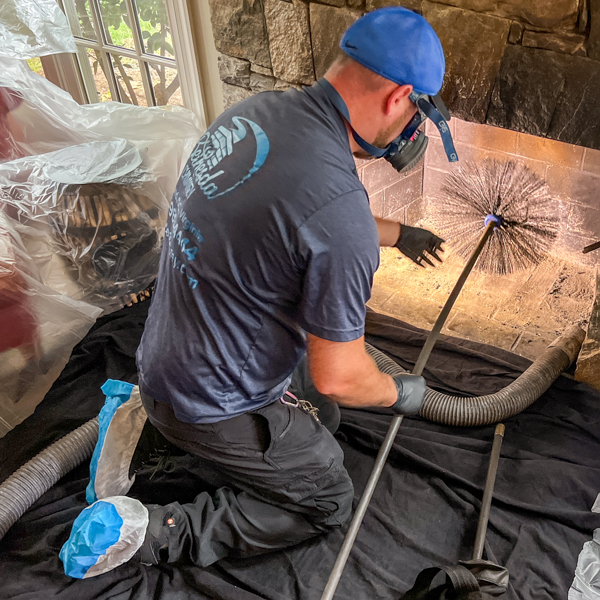What Is Creosote And What Makes It Dangerous
One of the pleasures of owning a beautiful fireplace is the warmth, aroma, and view of a spectacular wood-burning fire. However, as the smoke and exhaust of the fire are venting out the stack, a hidden danger is going along for the ride. It's called creosote, and here is what makes it so dangerous.
What Is Creosote?
Now, you’re probably wondering what creosote is. Creosote is a volatile organic compound (VOC) naturally created during the combustion of solid fuels like wood. The heat distills the natural oils in the wood that fuels the fire. As the smoke rises through the chimney, some creosote sticks to the interior masonry, flue liner, smoke chamber, and other components.
When creosote hardens inside the chimney, it becomes increasingly flammable. That’s what makes it so dangerous. The high heat inside the flue or a hot ember can cause the creosote to combust into flames. If it gets hot enough, the fire can spread to the attic, roof deck, ceiling, and other areas of your home. It can cause a three-alarm house fire in a matter of minutes.
What Causes Creosote Buildup?
The primary cause of creosote is incomplete combustion, but the cause of creosote buildup in the chimney is improper maintenance. Creosote goes through three stages turning from a white or grayish powdery substance (stage 1) to a dark oily, or tarry compound (stage 3). In its initial stages, creosote is easily removed with a standard chimney brush.
Without regular chimney sweeping, however, creosote will continue to accumulate inside the flue, hardening into stage 3 or glazed creosote that is extremely difficult to remove without the specialized tools and supplies of a Certified Chimney Sweep®.
What Makes it Dangerous?

As mentioned earlier, its high flammability is what makes it dangerous. In fact, creosote buildup due to a failure to properly clean the chimney is the primary cause of chimney fires in Montgomery County, MD, and throughout the Greater Washington DC and Northeast Virginia area.
According to the Chimney Safety Institute of America (CSIA), most chimney fires are small and go unnoticed by the homeowner until damage reveals the remnants during a chimney inspection. In the meantime, even a small fire can cause flue tiles to crack, peel, and burst, weakening their ability to protect and contain the heat and flames inside the chimney.
Creosote is not only a fire hazard but also hazardous to the health of your family and pets. Creosote buildup can restrict the airflow inside the chimney, which can cause back puffing. When back puffing occurs, the draft reverses, sending smoke, soot, creosote, and other harmful contaminants pouring into your living area. The inhalation of creosote can cause health problems. It is also listed as a potential carcinogen.
 Professional Chimney Cleaning & Creosote Removal
Professional Chimney Cleaning & Creosote Removal
Ask A Chimney Pro!
If it has been more than 12 months since your last chimney cleaning and inspection, your flue likely contains flammable creosote. Bethesda Chimney is your hometown provider of professional chimney cleaning, inspection, and creosote removal for residential, commercial, and government buildings throughout Greater Washington DC, Montgomery County, MD, and Northeast Virginia.
Call 703-935-4444 to schedule an appointment with a Certified Chimney Sweep® to schedule a chimney inspection. Or, contact us online to speak with a home heating expert.









